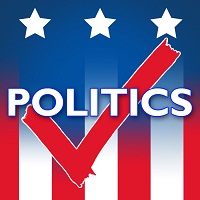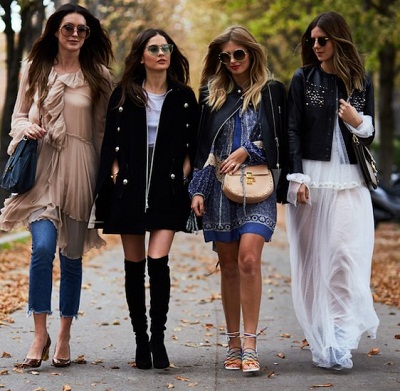"Fashion and politics have always complemented each other in paving the future growth of a nation. The term Fashion Activism, coined by famous designer Céline Semaan, Founder of Tech Lab Slow Factory denotes the use of fashion to implement social and political change. Semaan championed the term by retailing an assortment of socially conscious fashion garments and accessories for social causes, such as the ‘Banned’ scarf to revolt against American President Donald Trump’s Muslim Ban or the ‘First Amendment Jacket’ featuring the First Amendment written in Arabic to show disagreement towards crimes against American Muslims."
 Fashion and politics have always complemented each other in paving the future growth of a nation. The term Fashion Activism, coined by famous designer Céline Semaan, Founder of Tech Lab Slow Factory denotes the use of fashion to implement social and political change. Semaan championed the term by retailing an assortment of socially conscious fashion garments and accessories for social causes, such as the ‘Banned’ scarf to revolt against American President Donald Trump’s Muslim Ban or the ‘First Amendment Jacket’ featuring the First Amendment written in Arabic to show disagreement towards crimes against American Muslims.
Fashion and politics have always complemented each other in paving the future growth of a nation. The term Fashion Activism, coined by famous designer Céline Semaan, Founder of Tech Lab Slow Factory denotes the use of fashion to implement social and political change. Semaan championed the term by retailing an assortment of socially conscious fashion garments and accessories for social causes, such as the ‘Banned’ scarf to revolt against American President Donald Trump’s Muslim Ban or the ‘First Amendment Jacket’ featuring the First Amendment written in Arabic to show disagreement towards crimes against American Muslims.
Globally peace sign symbols have broken the market during the hippie movements whereas Trump supporting hats saying ‘Make America Great Again’ were retailed during the 2016 electoral campaign to show profits up to 40 per cent for small retailers.
Fashion shapes the political landscape
Several movements throughout history were promoted better using the power of attire. Suffragettes used color to communicate and spread the idea of votes for all: purple for dignity, white for purity and green for hope. Recently, high fashion retailers Liberty and Selfridges showcased an assortment of tricolour ribbons, underwear, bags and soaps on retail to uphold the dignity of the woman in everything.
Several fashion movements are conforming to the new fashion strata to emphasise a point. The Black Panther spirit of 1960s and 1970s was evoked by a simple accessory of the era: the beret. Maria Grazia Chiuri, Creative Director of Dior unveiled a new collection of leather berets by Stephen Jones that represents an army of strong and independent women.
Rise of the inclusive fashion
Amidst diverse consumer groups influencing social, broadcast and print media, ‘inclusive fashion’ was born. This trend became popular in 2017, when the American President called transgender community a ‘burden. This resulted in a sudden outburst of rainbow colors laced over layers of garments. Numerous fashion retailers introduced collections supporting the community.
became popular in 2017, when the American President called transgender community a ‘burden. This resulted in a sudden outburst of rainbow colors laced over layers of garments. Numerous fashion retailers introduced collections supporting the community.
Calvin Klein launched Calvin Klein Pride capsule and donated the revenue collected to Human Rights Campaign, while Gap Inc. launched the ‘Wear Your Pride’ collection and H&M introduced its first-ever ‘Cohesive Collection’ dedicated to support the LGBTQ community. Other major names that were soon to join the movement were Kenneth Cole with the Pride Kam Sneakers, J Crew’s ‘Love First’ collection, Tommy Hilfiger’s inclusion of rainbow colours in their logo and Speedo’s rainbow swimwear collection.
Emergence of smaller retail groups
The movement also gave rise to smaller retail groups such as e-retailer Ease-In-Tees and Queer Theory which retail clothes, accessories and jewellery reprising the LGBTQ along with. Gender norms no longer dictate the runways. The trends are changing globally as was seen in the gender-neutral Spring and Fall 2019 collections of designers such as Stockholm’s Selam Fessahaye; Copenhagen’s Stine Goya; Dutch designers Viktor Horsting and Rolf Snoeren; Hedi Slimane of French fashion brand Celine; American designer Harris Reed and quirky fashion house Moschino.
With body positivity as a trending notion, Michael Kors showcased its first body positive collection in NYFW Fall 2017, while Dolce & Gabbana presented its Spring 2019 RTW collection through a plethora of models without any age, size, race or gender bar. Brands like Good American and Nike launched the plus size collection for sportswear, while e-retailers like ASOS and ModCloth introduced their plus-size lines for e-commerce.
Thus, the utilisation of fashion offers two-way benefits – it not only involves the consumer in bigger cause but also ensures subsequent profits for the retailers.












